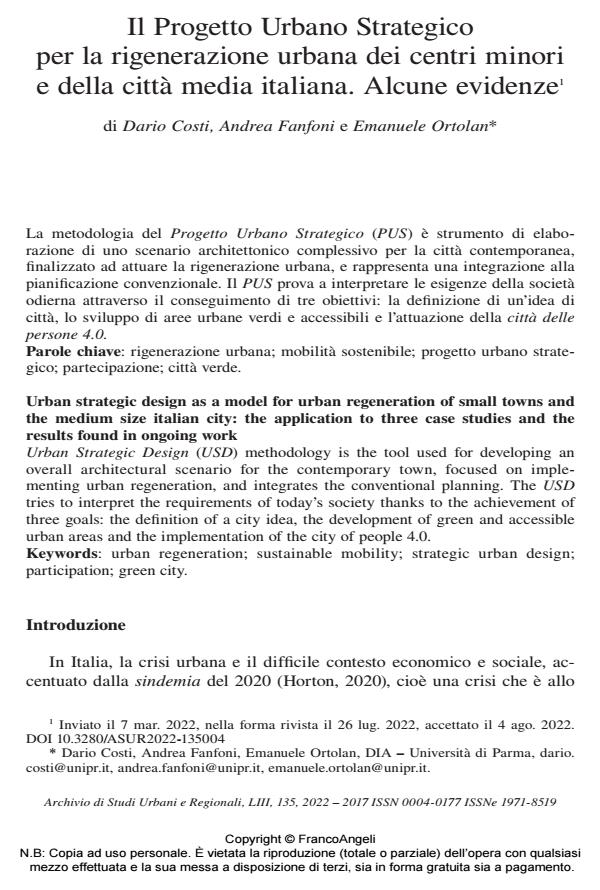Urban strategic design as a model for urban regeneration of small towns and the medium size italian city: the application to three case studies and the results found in ongoing work
Journal title ARCHIVIO DI STUDI URBANI E REGIONALI
Author/s Dario Costi, Andrea Fanfoni , Emanuele Ortolan
Publishing Year 2023 Issue 2022/135
Language Italian Pages 26 P. 70-95 File size 628 KB
DOI 10.3280/ASUR2022-135004
DOI is like a bar code for intellectual property: to have more infomation
click here
Below, you can see the article first page
If you want to buy this article in PDF format, you can do it, following the instructions to buy download credits

FrancoAngeli is member of Publishers International Linking Association, Inc (PILA), a not-for-profit association which run the CrossRef service enabling links to and from online scholarly content.
Urban Strategic Design (USD) methodology is the tool used for developing an overall architectural scenario for the contemporary town, focused on imple- menting urban regeneration, and integrates the conventional planning. The USD tries to interpret the requirements of today’s society thanks to the achievement of three goals: the definition of a city idea, the development of green and accessible urban areas and the implementation of the city of people 4.0.
Keywords: urban regeneration; sustainable mobility; strategic urban design; participation; green city.
Dario Costi, Andrea Fanfoni , Emanuele Ortolan, Il Progetto Urbano Strategico per la rigenerazione urbana dei centri minori e della città media italiana. Alcune evidenze in "ARCHIVIO DI STUDI URBANI E REGIONALI" 135/2022, pp 70-95, DOI: 10.3280/ASUR2022-135004